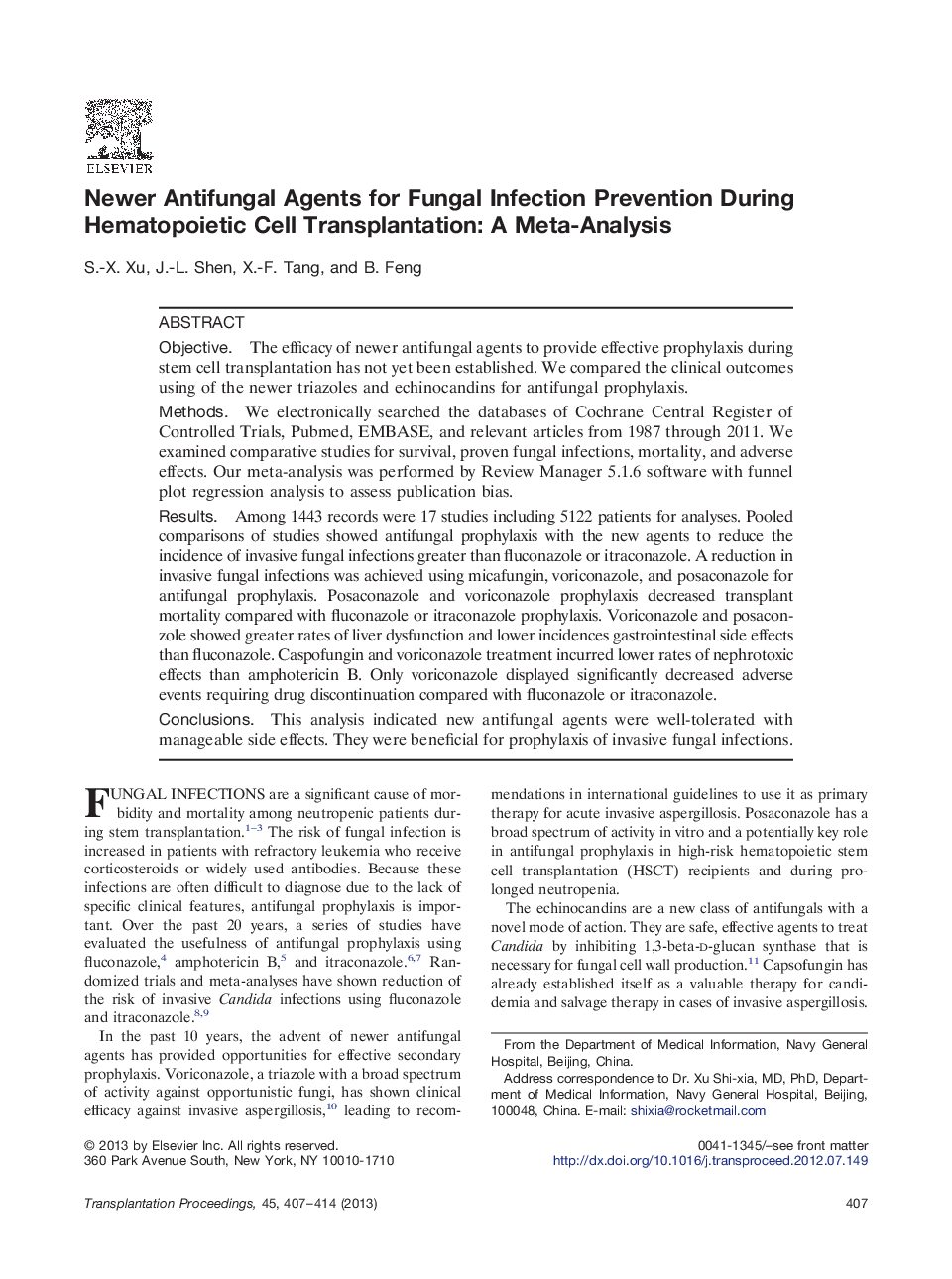| Article ID | Journal | Published Year | Pages | File Type |
|---|---|---|---|---|
| 4257135 | Transplantation Proceedings | 2013 | 8 Pages |
ObjectiveThe efficacy of newer antifungal agents to provide effective prophylaxis during stem cell transplantation has not yet been established. We compared the clinical outcomes using of the newer triazoles and echinocandins for antifungal prophylaxis.MethodsWe electronically searched the databases of Cochrane Central Register of Controlled Trials, Pubmed, EMBASE, and relevant articles from 1987 through 2011. We examined comparative studies for survival, proven fungal infections, mortality, and adverse effects. Our meta-analysis was performed by Review Manager 5.1.6 software with funnel plot regression analysis to assess publication bias.ResultsAmong 1443 records were 17 studies including 5122 patients for analyses. Pooled comparisons of studies showed antifungal prophylaxis with the new agents to reduce the incidence of invasive fungal infections greater than fluconazole or itraconazole. A reduction in invasive fungal infections was achieved using micafungin, voriconazole, and posaconazole for antifungal prophylaxis. Posaconazole and voriconazole prophylaxis decreased transplant mortality compared with fluconazole or itraconazole prophylaxis. Voriconazole and posaconzole showed greater rates of liver dysfunction and lower incidences gastrointestinal side effects than fluconazole. Caspofungin and voriconazole treatment incurred lower rates of nephrotoxic effects than amphotericin B. Only voriconazole displayed significantly decreased adverse events requiring drug discontinuation compared with fluconazole or itraconazole.ConclusionsThis analysis indicated new antifungal agents were well-tolerated with manageable side effects. They were beneficial for prophylaxis of invasive fungal infections.
